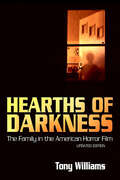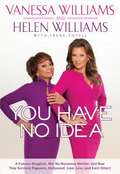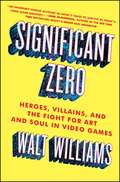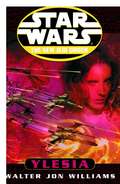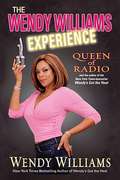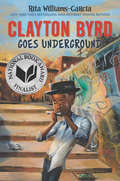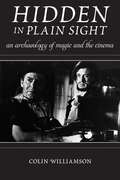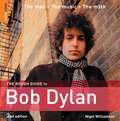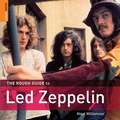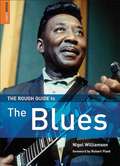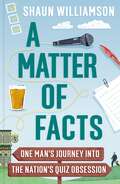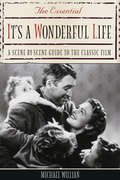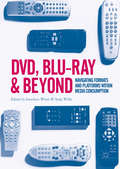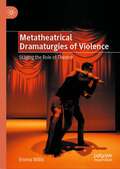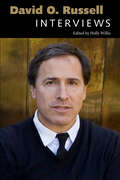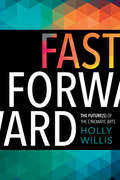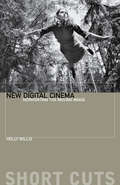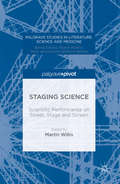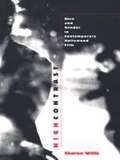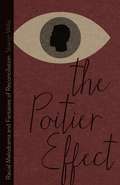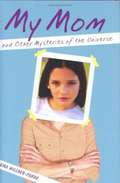- Table View
- List View
Hearths of Darkness: The Family in the American Horror Film, Updated Edition
by Tony WilliamsHearths of Darkness: The Family in the American Horror Film traces the origins of the 1970s family horror subgenre to certain aspects of American culture and classical Hollywood cinema. Far from being an ephemeral and short-lived genre, horror actually relates to many facets of American history from its beginnings to the present day. Individual chapters examine aspects of the genre, its roots in the Universal horror films of the 1930s, the Val Lewton RKO unit of the 1940s, and the crucial role of Alfred Hitchcock as the father of the modern American horror film. Subsequent chapters investigate the key works of the 1970s by directors such as Larry Cohen, George A. Romero, Brian De Palma, Wes Craven, and Tobe Hooper, revealing the distinctive nature of films such as Bone, It's Alive, God Told Me To, Carrie, The Exorcist, Exorcist 2, The Texas Chainsaw Massacre, as well as the contributions of such writers as Stephen King. Williams also studies the slasher films of the 1980s and 1990s, such as the Friday the 13th series, Halloween, the remake of The Texas Chainsaw Massacre, and Nightmare on Elm Street, exploring their failure to improve on the radical achievements of the films of the 1970s.After covering some post-1970s films, such as The Shining, the book concludes with a new postscript examining neglected films of the twentieth and early twenty-first century. Despite the overall decline in the American horror film, Williams determines that, far from being dead, the family horror film is still with us. Elements of family horror even appear in modern television series such as The Sopranos. This updated edition also includes a new introduction.
You Have No Idea
by Vanessa Williams Helen WilliamsA candid and inspirational mother-daughter memoir of family, fame, trials, and triumphs by superstar Vanessa Williams her mother Helen Williams. Since she was a little girl, Vanessa Williams wanted to be on Broadway. As a musical theater major in college she was on her way, but life took a turn when she became the first black Miss America. Forced to resign due to a nude photo scandal, it looked like her dreams were over. But through determination, and with a mom who was always there for her, she went on to conquer the entertainment world. Like most teenagers, Vanessa Williams was often at odds with her mom. Despite their early conflicts, Helen has always ardently protected her daughter, staying in contact with the FBI about death threats Vanessa received and being there for her through the birth of her four children and dissolution of her two marriages. Vanessa and Helen tell of how they've made it through the many ups and down in their lives; and Vanessa dishes on her career and parts of her life that even her mother had no idea about--until now. You Have No Idea is a celebration of the love between a mother and daughter as well as the lives thus far of two women who have consistently defied the odds to achieve success - no matter how uncertain their paths might have been.
Music, Music for Everyone
by Vera B WilliamsA beautiful celebration of the power of music and of community—a companion book to the beloved Caldecott Honor picture book A Chair for My Mother."Rosa organizes her friends into the Oak Street Band in order to earn money her family needs because of her grandma's illness. Community, family and personal triumphs converge, making unforgettable music for everyone." —School Library Journal"Visual references connect readers to earlier books about Rosa's three-generation family, while the theme here underscores the interrelationship of Rosa to her foremothers, her girl friends, and their neighborhood. Images rich in vitality are placed within superbly composed, bordered watercolor paintings to convey the spirit of the story as well as details of their daily living." —BCCBVera B. Williams's beloved picture book favorites include:"More More More," Said the BabyAmber Was Brave, Essie Was SmartA Chair for AlwaysA Chair for My MotherCherries and Cherry PitsMusic, Music for EveryoneSomething Special for MeStringbean's Trip to the Shining SeaThree Days on a River in a Red Canoe
Significant Zero: Heroes, Villains, and the Fight for Art and Soul in Video Games
by Walt WilliamsFrom the award-winning videogame writer behind Spec Ops: The Line comes an exclusive behind-the-scenes look at how today’s blockbuster video games are made.When his satirical musings in a college newspaper got him discharged from the Air Force, it became clear to Walt Williams that his destiny in life was to be a writer—he just never thought he’d end up writing video games, let alone working on some of the most successful franchises in the industry—Bioshock, Civilization, Borderlands, and Mafia among others. Williams pulls back the curtain on an astonishingly profitable industry that has put its stamp on pop culture and yet is little known to those outside its walls. In his reflective yet comically-observant voice, Williams walks you through his unlikely and at times inglorious rise within one of the world’s top gaming companies, exposing an industry abundant in brain power and out-sized egos, but struggling to stay innovative. Significant Zero also provides clear-eyed criticism of the industry’s addiction to violence and explains how the role of the narrative designer—the poor soul responsible for harmonizing gameplay with storylines—is crucial for expanding the scope of video games into more immersive and emotional experiences. Significant Zero offers a rare look inside this fascinating, billion-dollar industry and a path forward for its talented men and women—gamers and nongamers alike—that imagines how video games might inspire the best in all of us.
Star Wars: Ylesia (Star Wars: The New Jedi Order - Legends)
by Walter Jon WilliamsKyp's plan calls for a lightning-fast strike, backed with overwhelming force, to destroy the Brigade's offensive capabilities and teach prospective traitors that betrayal carries a heavy price. But young Jacen Solo, still bearing the scars of his imprisonment by the Yuuzhan Vong, has a better idea: a daring raid into the heart of Ylesia's capital, with the objective of capturing the Brigade's top leaders-including the newly sworn-in President, Thrackan Sal-Solo, cousin to Jacen and his twin, Jaina. But unknown to the Jedi and the New Republic forces, Supreme Overlord Shimrra of the Yuuzhan Vong has dispatched reinforcements to the Ylesia system. Instead of a swift surgical strike, Jaina, Jacen, Kyp, and their comrades are about to find themselves locked in a desperate battle for survival, with the odds stacked against them and time running out...
The Wendy Williams Experience
by Wendy WilliamsIn the dishiest book of the year, the top-rated and controversial radio host delivers the good, the bad, and the ugly on the industry's biggest stars. But we'll let her speak for herself: Whitney Houston: "We have watched her go from our princess...to what looks like one step above a crackhead."
Blue Tights
by Rita Williams-GarciaGrowing up in a city neighborhood, fifteen-year-old Joyce, unsure of herself and not quite comfortable with her maturing body, tries to find a place to belong and a way to express herself through dance.
Clayton Byrd Goes Underground
by Rita Williams-Garcia<P>Clayton feels most alive when he’s with his grandfather, Cool Papa Byrd, and the band of Bluesmen—he can’t wait to join them, just as soon as he has a blues song of his own. But then the unthinkable happens. Cool Papa Byrd dies, and Clayton’s mother forbids Clayton from playing the blues. And Clayton knows that’s no way to live. <P>Armed with his grandfather’s brown porkpie hat and his harmonica, he runs away from home in search of the Bluesmen, hoping he can join them on the road. But on the journey that takes him through the New York City subways and to Washington Square Park, Clayton learns some things that surprise him. <P>From beloved Newbery Honor winner and three-time Coretta Scott King Award winner Rita Williams-Garcia comes a powerful and heartfelt novel about loss, family, and love that will appeal to fans of Jason Reynolds and Kwame Alexander.
Hidden in Plain Sight
by Colin WilliamsonWhat does it mean to describe cinematic effects as "movie magic," to compare filmmakers to magicians, or to say that the cinema is all a "trick"? The heyday of stage illusionism was over a century ago, so why do such performances still serve as a key reference point for understanding filmmaking, especially now that so much of the cinema rests on the use of computers? To answer these questions, Colin Williamson situates film within a long tradition of magical practices that combine art and science, involve deception and discovery, and evoke two forms of wonder--both awe at the illusion displayed and curiosity about how it was performed. He thus considers how, even as they mystify audiences, cinematic illusions also inspire them to learn more about the technologies and techniques behind moving images. Tracing the overlaps between the worlds of magic and filmmaking, Hidden in Plain Sight examines how professional illusionists and their tricks have been represented onscreen, while also considering stage magicians who have stepped behind the camera, from Georges Méliès to Ricky Jay. Williamson offers an insightful, wide-ranging investigation of how the cinema has functioned as a "device of wonder" for more than a century, while also exploring how several key filmmakers, from Orson Welles to Christopher Nolan and Martin Scorsese, employ the rhetoric of magic. Examining pre-cinematic visual culture, animation, nonfiction film, and the digital trickery of today's CGI spectacles, Hidden in Plain Sight provides an eye-opening look at the powerful ways that magic has shaped our modes of perception and our experiences of the cinema.
The Rough Guide to Bob Dylan
by Nigel WilliamsonBob Dylan is the ultimate singer-songwriter - revered, enigmatic and responsible for a staggering number of classic songs. This second edition of The Rough Guide to Bob Dylan demystifies the man and the music, exploring his life, his lyrics, and the legends that surrounded them. The Life: from Minnesota to Manchester, from the Albert Hall to the Never Ending Tour, The Music: the 50 greatest songs and the stories behind them, plus albums, bootlegs and compilations, The Movies: Dylan on screen and soundtracks, from Pat Garrett & Billy the Kid to No Direction Home, Dylanology: the wisdom of Bob, comic songs and curios, plus books, fanzines and websites.
The Rough Guide to Led Zeppelin
by Nigel WilliamsonRock legends Led Zeppelin remain a colossal music force with songs at once mystical, heavy, traditional and highly original. The Rough Guide to Led Zeppelin tells the story of the life and afterlife of this most extraordinary supergroup. Features include: The Story: from the first meeting of Plant and Page to the untimely death of John Bonham, detailing the magic, mayhem and excesses of the era. The Music: the band's fifty best songs unpicked, plus coverage of blues influences, bootlegs, solo careers, and the best Jimmy Page guitar solos and most outstanding Robert Plant vocals. The Passengers: profiles of collaborators and colleagues including Roy Harper and Mickie Most. The Cargo: Zeppelin films, places, myths and memorabilia, books, websites and the afterlife of 'Stairway to Heaven.' It's a whole lotta Zep . . . .
The Rough Guide to the Blues
by Nigel WilliamsonThe Rough Guide to Blues gives you the complete lowdown on all the grittiest singers, bottleneck guitarists, belt-it-out divas and wailing harmonica players that made the most influential music of the last century. From music legend B.B. King to folk hero Robert Johnson, the guide includes detailed profiles of hundreds of artists and critical reviews of their best albums. The fascinating story is told in full--how the blues crawled from the Mississippi Delta, went electric in the big cities, and spread across the world--with feature boxes on topics like boogie woogie, gospel and the best blues record labels. Check out the ten greatest slide-guitar tracks or the ten most miserable 'woke up this mornin's. With the handy playlists that help you to pick 'n' choose quick 'best ofs' to download to your iPod or MP3 player.
A Matter of Facts: One Man's Journey into the Nation's Quiz Obsession
by Shaun WilliamsonA journey into the obsessive world of quizzing. Includes stories from Shaun's past such as tales from his time playing Barry in Eastenders; the discovery of a long-lost son; hiding from an angry Mike Reid in a broom cupboard; acting with Ricky Gervais and David Bowie, and the loss of his boyhood friend in 9/11.Actor and celebrity quizzer Shaun Williamson lifts the lid on a National drug that everyone hooked on: quizzing. A Matter of Facts is a personal journey into the world of quizzes. At the start Shaun enters the World Quiz Grand Prix, pitching his knowledge against the Nation's finest minds, including Eggheads and Chasers... he fails. Unperturbed, he sets out to improve his skills through memory training, practice and even hypnosis in an attempt to move himself up the rankings of the quizzing elite. Shaun's adventure sees him get his old quizzing 'band' back together to see if he can triumph in the leagues. As he does so, he meets many characters and experiences the wonderful vagaries of the pub quiz - discovering its place, not just in communities, but in people's lives. He also reminisces about his life before acting as an alcoholic postman, a stalled naval career,a Pontins blue coat and his journey to becoming Barry in EastEnders. Over the course of year Shaun aims to end his journey at a victorious return to the Grand Prix... can his experiences and new-found knowledge end in victory? A Matter of Facts is a fun, fascinating and heart-warming read that will be adored by those who enjoy a regular meeting of alcohol and trivia.
A Matter of Facts: One Man's Journey into the Nation's Quiz Obsession
by Shaun WilliamsonA journey into the obsessive world of quizzing. Includes stories from Shaun's past such as tales from his time playing Barry in Eastenders; the discovery of a long-lost son; hiding from an angry Mike Reid in a broom cupboard; acting with Ricky Gervais and David Bowie, and the loss of his boyhood friend in 9/11.Actor and celebrity quizzer Shaun Williamson lifts the lid on a National drug that everyone hooked on: quizzing. A Matter of Facts is a personal journey into the world of quizzes. At the start Shaun enters the World Quiz Grand Prix, pitching his knowledge against the Nation's finest minds, including Eggheads and Chasers... he fails. Unperturbed, he sets out to improve his skills through memory training, practice and even hypnosis in an attempt to move himself up the rankings of the quizzing elite. Shaun's adventure sees him get his old quizzing 'band' back together to see if he can triumph in the leagues. As he does so, he meets many characters and experiences the wonderful vagaries of the pub quiz - discovering its place, not just in communities, but in people's lives. He also reminisces about his life before acting as an alcoholic postman, a stalled naval career,a Pontins blue coat and his journey to becoming Barry in EastEnders. Over the course of year Shaun aims to end his journey at a victorious return to the Grand Prix... can his experiences and new-found knowledge end in victory?A Matter of Facts is a fun, fascinating and heart-warming read that will be adored by those who enjoy a regular meeting of alcohol and trivia.
The Essential It's a Wonderful Life: A Scene-By-Scene Guide to the Classic Film
by Michael WillianEven the most ardent fans of It's a Wonderful Life will be surprised and delighted by the insightful discussions of film details, cast anecdotes, curiosities, and gaffes found in this charming guide. Providing a fresh perspective, this companion includes a handy film chronology and an overview of the plot, a complete breakdown of the musical score, a fun and challenging quiz, a DVD bookmarking feature designed to give instant access to favorite scenes and other points of interest, informative historical sidebars, the complete lyrics to "Buffalo Gals," and never-before-seen maps and diagrams of downtown Bedford Falls, downtown Pottersville, the Building and Loan, and 320 Sycamore. In addition, film lovers will learn why George should have spent Christmas Eve in jail, who crashes the Bailey family Christmas Eve gathering, the story behind the sudden demise of Mr. Gower's son, how to make a flaming rum punch, the real-life site of the Bedford Falls High School "swim-gym," and other fascinating trivia related to the classic.
DVD, Blu-ray and Beyond: Navigating Formats and Platforms within Media Consumption
by Andy Willis Jonathan WrootThis book demonstrates, in contrast to statistics that show declining consumption of physical formats, that there has not been a mass shift towards purely digital media. Physical releases such as special editions, DVD box-sets and Blu-Rays are frequently promoted and sought out by consumers. And that past formats such as VHS, Laserdisc and HD-DVD make for sought-after collectible items. These trends are also found within particular genres and niche categories, such as documentary, education and independent film distribution. Through its case studies, this collection makes a distinctive and significant intervention in highlighting the ways in which the film industry has responded to rapidly changing markets. This volume, global in scope, will prove useful to those studying the distribution and exhibition of films, and the economics of the film industry around the world.
Metatheatrical Dramaturgies of Violence: Staging the Role of Theatre
by Emma WillisThis book examines a series of contemporary plays where writers put theatre itself on stage. The texts examined variously dramatize how theatre falls short in response to the demands of violence, expose its implication in structures of violence—including racism and gender-based violence—and illustrate how it might effectively resist violence through reconfiguring representation. Case studies, which include Jackie Sibblies Drury’s We Are Proud to Present and Fairview, Ella Hickson’s The Writer and Tim Crouch’s The Author, provide a range of practice-based perspectives on the question of whether theatre is capable of accounting for and expressing the complexities of structural and interpersonal violence as both lived in the body and borne out in society. The book will appeal to scholars and artists working in the areas of violence, theatre and ethics, witnessing, memory and trauma, spectatorship and contemporary dramaturgy, as well as to those interested in both the doubts and dreams we have about the role of theatre in the twenty-first century.
David O. Russell: Interviews (Conversations with Filmmakers Series)
by Holly WillisDavid O. Russell (b. 1958) boasts a diverse body of work as a writer and director, spanning multiple genres and featuring radically differing aesthetic styles. While his early work comically explored taboo subjects with unerring directness, he has also investigated politics with explosive satire. In his most recent films, including American Hustle and Silver Linings Playbook, Russell examines characters and situations that are at once everyday and also extraordinary. Whatever the project, Russell is driven to explore the idiosyncrasies that make each character human, and he extends that curiosity to explore what makes each actor unique. His attentiveness to his cast members has earned him the label of "actor's director," due in no small part to the many nominations and awards earned by a long list of Hollywood stars in his movies.Russell has also become one of our era's most interesting formal stylists as he adopts a visual design appropriate to each of his film's thematic concerns. The result may be a color palette resembling the washed-out pages of a newspaper achieved by manipulating the film stock for Three Kings or the tumultuous opening of The Fighter when an audacious, roving camera plunges viewers straight into the story from the very first shots of the film. Rather than building a signature style, Russell has instead tested the varied possibilities of cinematic expression.This career-spanning volume features conversations with scholars and journalists as well as filmmakers. Speaking to directors like Alexander Payne and Spike Jonze, Russell contextualizes each of his films, offers an intimate account of his evolving writing and directing process, and opens his life to reveal how a remarkable body of work has come to be.
Fast Forward: The Future(s) of the Cinematic Arts
by Holly WillisCinema, the primary vehicle for storytelling in the twentieth century, is being reconfigured y new media in the twenty-first. Terms such as "worldbuilding," "virtual reality," and "transmedia" introduce new methods for constructing a screenplay and experiencing and sharing a story. Similarly, 3D cinematography, hypercinema, and visual effects require different modes for composing an image, and virtual technology, motion capture, and previsualization completely rearrange the traditional flow of cinematic production. What does this mean for telling stories? Fast Forward answers this question by investigating a full range of contemporary creative practices dedicated to the future of mediated storytelling and by connecting with a new generation of filmmakers, screenwriters, technologists, media artists, and designers to discover how they work now, and toward what end. From Chris Milk and Aaron Koblin's exploration of VR spherical filmmaking to Rebeca Méndez's projection and installation work exploring climate change to the richly mediated interactive live performances of the collective Cloud Eye Control, this volume captures a moment of creative evolution and sets the stage for imagining the future of the cinematic arts.
Fast Forward: The Future(s) of the Cinematic Arts
by Holly WillisCinema, the primary vehicle for storytelling in the twentieth century, is being reconfigured by new media in the twenty-first. Terms such as "worldbuilding," "virtual reality," and "transmedia" introduce new methods for constructing a screenplay and experiencing and sharing a story. Similarly, 3D cinematography, hypercinema, and visual effects require different modes for composing an image, and virtual technology, motion capture, and previsualization completely rearrange the traditional flow of cinematic production. What does this mean for telling stories? Fast Forward answers this question by investigating a full range of contemporary creative practices dedicated to the future of mediated storytelling and by connecting with a new generation of filmmakers, screenwriters, technologists, media artists, and designers to discover how they work now, and toward what end. From Chris Milk and Aaron Koblin's exploration of VR spherical filmmaking to Rebeca Méndez's projection and installation work exploring climate change to the richly mediated interactive live performances of the collective Cloud Eye Control, this volume captures a moment of creative evolution and sets the stage for imagining the future of the cinematic arts.
New Digital Cinema: Reinventing the Moving Image (Short Cuts)
by Holly WillisThis introduction to contemporary digital cinema tracks its intersection with video art, music video, animation, print design and live club events to create an avant-garde for the new millennium. It begins by investigating digital cinema and its contribution to innovations in the feature-film format, examining animation and live-action hybrids, the gritty aesthetic of the Dogme 95 filmmakers, the explosions of frames within frames and the evolution of the ‘ambient narrative’ film. This study then looks at the creation of new genres and moving-image experiences as what we know as ‘cinema’ enters new venues and formats.
Staging Science
by Martin WillisThis book considers scientific performances across two centuries, from the early nineteenth century to the present day. Performances include demonstrations of technologies, experiments that look like theatre, theatre that looks like science, tourist representations and natural history film-making. Its key aim is to open debate on how scientific activity, both historical and contemporary, might be understood in the context of performance studies and the imaginative acts required to stage engaging performances. Scientific performances have become increasingly of interest to historians of science, literature and science scholars, and in the field of science studies. As yet, however, no work has sought to examine a range of scientific performances with the aim of interrogating and illuminating the kinds of critical and theoretical practices that might be employed to engage with them. With scientific performance likely to become ever more central to scholarly study in the next few years this volume offer a timely, and early, intervention in the existing debates, and aims, too, to be a touchstone for future work.
High Contrast: Race and Gender in Contemporary Hollywood Films
by Sharon WillisIn High Contrast, Sharon Willis examines the dynamic relationships between racial and sexual difference in Hollywood film from the 1980s and 1990s. Seizing on the way these differences are accentuated, sensationalized, and eroticized on screen--most often with little apparent regard for the political context in which they operate--Willis restores that context through close readings of a range of movies from cinematic blockbusters to the work of the new auteurs, Spike Lee, David Lynch, and Quentin Tarantino.Capturing the political complexity of these films, Willis argues that race, gender, and sexuality, as they are figured in the fantasy of popular film, do not function separately, but rather inform and determine each other's meaning. She demonstrates how collective anxieties regarding social difference are mapped onto big budget movies like the Die Hard and Lethal Weapon series, Basic Instinct, Fatal Attraction, Thelma and Louise, Terminator 2, and others. Analyzing the artistic styles of directors Lynch, Tarantino, and Lee, in such films as Wild at Heart, Pulp Fiction, and Do the Right Thing, she investigates how these interactions of difference are linked to the production of specific authorial styles, and how race functions for each of these directors, particularly in relation to gender identity, erotics, and fantasy.
The Poitier Effect
by Sharon WillisThe civil rights struggle was convulsing the nation, its violence broadcast into every living room. Against this fraught background, Sidney Poitier emerged as an image of dignity, discipline, and moral authority. Here was the picture-perfect black man, helping German nuns build a chapel in The Lilies of the Field and overcoming the prejudices of recalcitrant students in To Sir with Love, a redneck sheriff in In the Heat of the Night, and a prospective father-in-law in Guess Who's Coming to Dinner. In his characters' restrained responses to white people's ignorance and bad behavior, Poitier represented racial reconciliation and reciprocal respect--the "Poitier effect" that Sharon Willis traces through cinema and television from the civil rights era to our own.The Poitier effect, in Willis's account, is a function of white wishful thinking about race relations. It represents a dream of achieving racial reconciliation and equality without any substantive change to the white world. This notion of change without change conforms smoothly with a fantasy of colorblindness, a culture in which difference makes no difference. Willis demonstrates how Poitier's embodiment of such a fantasy figures in the popular cinema of the civil rights era--and reasserts itself in recent melodramas such as The Long Walk Home, Pleasantville, Far from Heaven, and The Help. From change without change to change we can believe in, her book reveals how the Poitier effect, complicated by contemporary ideas about feminism, sexuality, and privilege, continues to inform our collective memory as well as our visions of a postracial society.
My Mom and Other Mysteries of the Universe
by Gina Willner-PardoWhen her parents go away for a month-long business trip, Arlie Metcalfe and her little brother, Michael, get to stay with their fun-loving aunt, Isabel. It seems as if it's going to be a month-long vacation, particularly for Arlie, who's looking forward to the time away from her demanding mother. But only a few days into the trip, Arlie's parents are seriously injured in a car accident, and her mother falls into a coma. On the very same day, a new girl arrives in Arlie's fifth-grade class. Casey has the same short brown hair, the same stubbornness, and the same bossiness as Arlie's mother. Is it possible that she is actually Arlie's mother as an eleven-year-old girl? Can Arlie somehow help her mother by befriending Casey? Or is this a gift from the universe for Arlie: a strange and wonderful way to know her mother before she was her mother?
